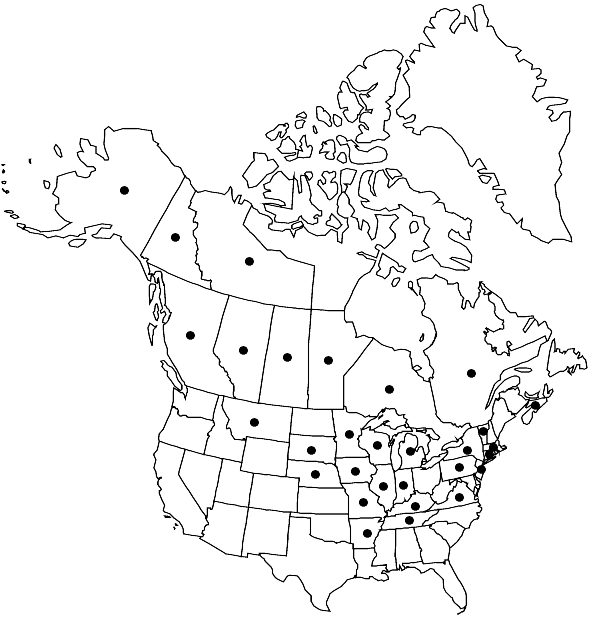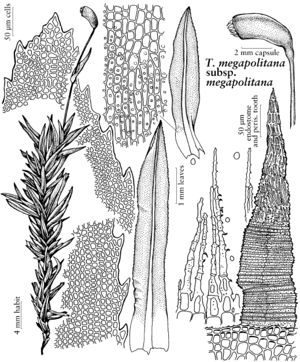Timmia megapolitana subsp. megapolitana
Cells of mid-limb lamina (8–) 9–12 (–14) µm wide (mean 10.5 µm); cells of distal part of leaf-sheath with 1–6 papillae on the abaxial surface. Calyptra often remaining attached to setae at base of capsule.
Habitat: Almost always with sporophytes. Most often in deciduous forests, on humus in moist, shady calcareous sites, northwards in forested localities, especially along major rivers, and as an adventive in disturbed sites such as lawns, golf courses or cemeteries
Elevation: low to moderate elevations (0-500 m)
Distribution

Alta., B.C., Man., N.W.T., N.S., Ont., Que., Sask., Yukon, Alaska, Ark., Conn., Ill., Ind., Iowa, Ky., Mass., Mich., Minn., Mo., Mont., Nebr., N.J., N.Y., Pa., S.Dak., Tenn., Vt., Va., Wis., Eurasia (China), Eurasia (Finland), Eurasia (Germany [extinct]), Eurasia (Netherlands), Eurasia (Russia)
Discussion
Subspecies megapolitana is the only taxon in the genus that is not an arctic or montane moss; it occurs primarily in temperate regions, and sporadic in the boreal region. It is also the only taxon occurring in man-made habitats. The common name reflects the resemblance of the erect, persistent calyptra to the feather headdresses used by some North American Indians.
Selected References
None.
Lower Taxa
"um" is not declared as a valid unit of measurement for this property."narrower" is not a number.
